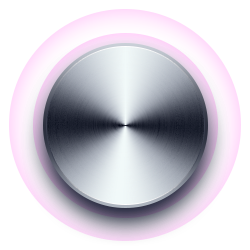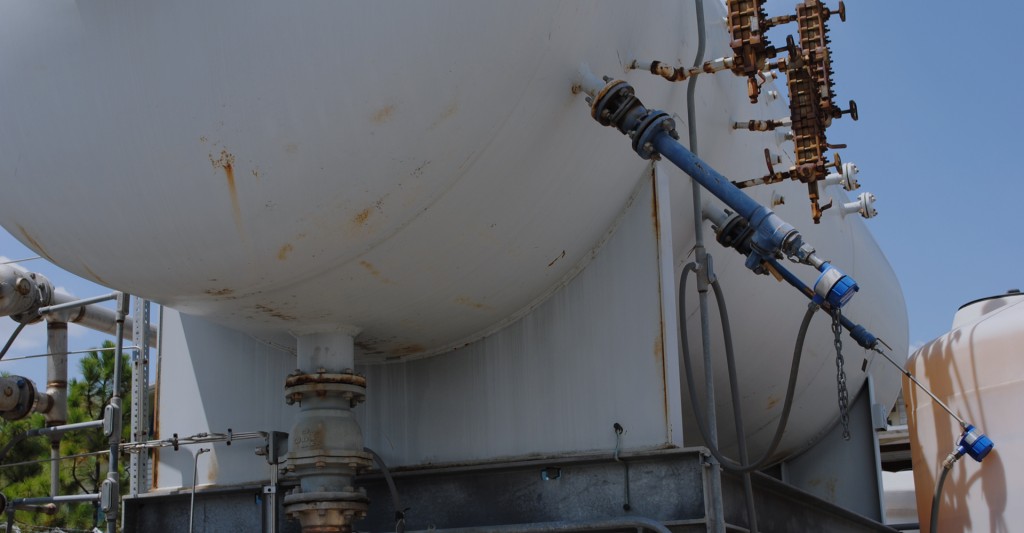Desalting Control & Automatic Dewatering requires the best tools.
Crude oil is more than just a valuable resource; it’s a complex mixture requiring meticulous treatment to meet market specifications. Two primary steps in refining this resource are desalting and automatic crude oil dewatering. These processes not only improve the quality of oil but also contribute significantly to operational safety and efficiency in oil processing. With technological advancements, we have unravelled methods to better control these processes and automate workflows, making crude oil treatment more accurate and less labour-intensive.
The desalting control aspect eliminates excess salts, which can cause numerous issues during downstream processes, such as corrosion and scaling in refinery equipment. On the other hand, auto-dewatering helps to separate oil from water, an essential procedure considering the massive quantities of water generated during oil extraction.
Gone are the days when these processes were manually handled. The emergence of automation technology in the field of crude oil treatment has empowered us with tools to efficiently manage the dewatering of crude oil, enabling us to consistently produce premium-quality oil. Let us delve into these intriguing topics.
Key Dewatering Takeaways
- Desalting and automatic dewatering are crucial processes in crude oil treatment.
- The desalting control works to eliminate excess salts, contributing significantly to the quality of the oil and operational safety.
- Auto dewatering is the process of separating oil from the massive quantities of water produced during oil extraction.
- Automation in the oil industry has greatly improved the efficiency and accuracy of these procedures.
- Both processes are integral to the production of premium-quality oil.
Understanding Desalting and Automatic Dewatering of Crude Oil
Processing crude oil involves various stages that contribute significantly to the overall quality of the final product. Among these stages, desalting and automatic dewatering of crude oil hold paramount importance. Today, we aim to peel back the layers on these processes, taking you on a comprehensive and insightful journey into their intricate workings.
The desalting process targets the removal of excess saline content in crude oil. Sodium chloride, along with other undesired impurities present in the original oil, can cause complications during subsequent steps such as refining. Furthermore, they pose risks to the health and longevity of processing equipment. The desalination of crude oil, therefore, ensures smoother downstream operations.
Meanwhile, automatic dewatering methods come into play to expel the inherent water content in crude oil. This stage crucially impacts the overall efficiency and cost-effectiveness of crude oil purification. Innovative technologies introduced over recent years have significantly enhanced the effectiveness of these dewatering methods, making them more reliable and efficient.
Modern techniques now enable us to optimise these processes, thereby delivering cleaner and more valuable crude oil. Despite the challenges faced during crude oil treatment, technological advancements play a significant role in overcoming these obstacles.
“The successful implementation of the desalting and automatic dewatering processes remains a vital aspect of the overall path towards efficient and economical crude oil purification.”
Let’s delve a bit more into the different aspects of desalting and automatic dewatering practices in the following table:
| Aspect | Desalting Process | Automatic Dewatering |
|---|---|---|
| Role in oil processing | Removal of salt from crude oil | Separation of water from crude oil |
| Underlying principle | Water washing and electrostatic precipitation | Density separation aided by technological equipment |
| Technological advancements | Advanced valves that control flow, temperature and pressure | High-efficiency dewatering systems with automated operations |
| Practical benefits | Prevents corrosion and optimizing downstream processes | Increases oil quality and reduces operation costs |
Exploring these aspects of crude oil treatment provides a deeper understanding of how the desalting and automatic dewatering of crude oil are helping industries to produce superior quality refined oil.
- Role in oil processing: The functionality of each process is clearly defined – with desalting focusing on salt removal and dewatering on water separation.
- Underlying principles: Each process follows a unique approach – desalting leveraging water washing and electrostatic precipitation, while automatic dewatering exploits density separation aided by technological advancements.
- Technological advancements: Evolution in both processes has given us advanced control valves for the desalting process and high-efficiency systems for automatic dewatering
- Practical benefits: The tangible benefits these processes deliver range from improved oil quality, reduced operation costs, and in the case of desalting, prevention of corrosion.
We look forward to continuing our exploration on this in forthcoming sections. Stay tuned to learn more!
The Importance of Desalting in Crude Oil Purification
In crude oil treatment, one procedure often grabs the spotlight due to its paramount importance: desalting. At this stage, excess salt and sediment are meticulously stripped away from the crude, laying the groundwork for the succeeding processing steps. Employing effective oil desalting techniques enhances the final product’s quality and spurs overall refining efficiency.
Benefits of Removing Excess Salt from Crude Oil
Ridding crude oil of excess salt holds several advantages. Prime among them is the reduction of corrosive damage to refinery equipment. When seawater salts get entrained in the oil, they tend to accumulate, leading to unwanted scale buildup. By eliminating this risk, desalting is after fewer equipment failures and maintenance issues.
Refineries effectively protect against operational downtime, undesirable extra expenses, and enhanced safety environments by reaping the benefits of desalting. Furthermore, improved quality of crude output means reduced particulate matter emissions, tying into the industry’s intensifying green efforts.
Impact of Salinity on Downstream Processes
The salinity level in crude oil also significantly dictates the course of downstream unit operations. All too often, high salinity yields a harsh impact on vital processes like catalytic cracking and hydroprocessing. For instance, chloride salts can cause fouling and corrosion, altering catalysts’ effectiveness and driving up maintenance needs.
“Salinity can impair capital-intensive processes, curb catalyst performance, and inflate refinery costs substantially.”
To surmount these challenges, effective desalting is paramount. Striving for low salinity levels through efficient desalting can help optimise refining operations, improve product quality, and slash operating costs – an all-around win for refining establishments.
| Key Parameters During the Desalting Process | Benefits |
|---|---|
| Control of temperature and pressure | Improvement in quality of oil, operational efficiency |
| Optimised addition of fresh water and demulsifiers | Cost saving in terms of chemicals used, reduced environmental impact |
| Proper mixing and settling | Lesser damage to downstream equipment, cost saving on repairs |
| Implementing monitoring and control technologies | Better efficiency, automatic adjusting capability for fluctuating salt content |
Introducing Automatic Dewatering Methods
In the current dynamic of oil industry, the evolution and application of technology is transforming traditional processes. A key area where this impact is notable is the dewatering process for crude oil where the water, present in crude oil, needs to be removed. Unveiling the revolutionary outcomes of technology, we introduce automatic dewatering process.
Among the benefits of these new methodologies is the efficiency enhancement that automation brings along. Unlike the manual procedures, which tend to be laborious and time-consuming, the automatic dewatering methods boost productivity and save crucial man-hours. This multi-faceted win situation, achieved via automatic water removal from crude oil, has significant economic implications for the oil industry and can lead to substantial cost savings over time.
“Automation in the de-watering process is not just a luxury but a requirement in the rapidly progressing oil industry that craves efficiency and cost-effectiveness.”
The following table compares traditional manual dewatering methods and the new automatic dewatering processes.
| Factors | Manual Dewatering Methods | Automatic Dewatering Methods |
|---|---|---|
| Efficiency | Lower | Higher |
| Economical | No | Yes |
| Labour-intensive | Yes | No |
| Time | More | Less |
We have also seen how crude oil desalination and automatic dewatering walk hand in hand, forming vital steps in oil refining processes today. The removal of salt and water from crude oil is not just integral to enhancing the quality of product, but also to extend the life of the installation equipment.
Adopting these automatic methods does not just signify advancement but also a step towards sustainability – a mantra that every industry is or needs to be chanting in the current times.
Exploring Advanced Crude Oil Treatment Techniques
As we continue to delve into the intricacies of oil processing, it is imperative to highlight some of the advanced crude oil treatment techniques currently available. These innovative methods contribute significantly to optimising the purification processes, including desalination, to yield high-quality crude oil. In this section, we will focus on two significant advancements, namely energy absorption technology and Hart technology.

A high-frequency, low-power energy is broadcast.

The detection range is a 3″ sphere around the tip.

Some of the energy is absorbed by the medium surrounding the antenna.

The analogue signal is generated relative to the absorption rate.
Energy Absorption Technology in Oil Processing
Energy absorption technology is an innovative method that optimises the desalting process of crude oil. By leveraging the principles of magnetism and radio waves, this technology effectively absorbs and removes the energy from saline elements in the crude oil. Consequently, it enhances the efficiency and effectiveness of the desalination process. This advanced technique translates to a cleaner and higher value crude oil, ready for downstream processing.
The Role of Hart Technology in Oil Desalination
Hart technology is another remarkable advancement easing the burden of oil desalination. It employs automation and remote operation capabilities to monitor and maintain the efficiency of the desalination process. Besides simplifying the process, this advanced technology aids in improving operational reliability, thus enriching the value of the crude oil product.
Undoubtedly, these advanced crude oil treatment techniques bring about a paradigm shift in oil processing. They solve traditional challenges and usher in a new era of efficiency and quality in oil production. With ongoing research and advancements, we can expect further refinement and improvements in these technologies, benefitting the oil industry at large.
Automated Control Systems for Enhanced Oil Desalination
Automation is no longer a buzzword; it’s a reality cementing its place in every major industry, including oil and gas. Today, we’re spotlighting the growing role of automated control systems and their impact on enhancing oil desalination efficiency.
Traditional methods of oil desalination often grapple with inconsistencies due to human error and mechanical inefficiencies. These methods can lead to subpar oil quality, increased downtime, and an ineffective use of resources. Automation, however, promises a significant leap forward. By leveraging advanced technologies, businesses can gain more control over their desalination processes-for both operational efficiency and product quality.
For instance, automatic tank dewatering systems differentiate water from oil in real-time, reducing the need for manual intervention. This automatic detection and separation lead to lesser room for error and more streamlined operations. So, what does this mean for oil desalination?
By automating desalination processes, oil companies can ensure consistent output of higher quality oil, keep up with demand, and ultimately, stay competitive in the marketplace.
Now, let’s delve a bit more into the specifics of these automated control systems and how they look in action.
| Automated Control Systems | Description | Impact on Oil Desalination |
|---|---|---|
| Multi-step Desalting Control | Uses automated controls to manage variables such as temperature, pressure and emulsion breaking to manage the desalting process. | Increases overall desalting efficiency, leading to purer oil at a faster pace. |
| Automated Dewatering Systems | Leverages sensors and control mechanisms to separate water from oil automatically. | Further improves efficiency by eliminating manual operations and reducing downtime. |
As we venture into the future of oil desalination, automation is poised to play an even greater role. While current automated systems have already made significant strides in enhancing efficiency and improving output quality, ongoing technological advancements hold the promise of even more groundbreaking improvements.
In the end, adopting and integrating automated control systems and automatic tank dewatering is undoubtedly an investment. However, with efficiency and quality at stake, it’s clear that the returns make it worthwhile—a testament to the transformative power of automation in even the most unconventional sectors.
Oil Desalting Techniques and Their Evolution
As we conclude our exploration of crude oil desalting, it’s crucial to look at how the techniques have evolved, from traditional oil desalting methods to cutting-edge technologies propelling modern desalting approaches. These advancements haven’t just improved the efficiency and environmental sustainability of oil processing; they’ve also reshaped the industry, preparing it for whatever future challenges may arise.
Traditional vs Modern Desalting Approaches
In the bygone era, basic two-stage desalting units were the pinnacle of technology for desalting crude oil. However, these traditional approaches were time-intensive and inefficient, yielding inconsistent results. Conversely, the modern desalting approaches utilise advanced technologies for greater efficiency and consistency, lessened environmental impact, and increased scalability, offering superior flexibility and responsiveness to market demands.
Innovations in Crude Oil Desalination Technology
Over recent years, technological breakthroughs have fuelled significant innovations in oil desalination. These cutting-edge solutions are enabling the industry to surpass the limitations of traditional oil desalting methods, improving not only the quality and efficiency of output, but also the environmental sustainability of the whole operation.
From auto-dewatering machines to energy absorption techniques, these technologies have been instrumental in transforming the crude oil processing landscape. As we forge ahead into a future brimming with possibilities, we look forward to the continued evolution of these pioneering technologies and their impact on the oil industry.
FAQ
What is the importance of desalting and automatic dewatering in crude oil processing?
Desalting and automatic dewatering are critical steps in refining crude oil to meet market specifications. These processes help remove impurities, control the quality of the final product, prevent corrosion and scaling in refinery equipment, and improve the efficiency and safety of overall oil processing operations.
How does the desalting process work in crude oil purification?
The desalting process in crude oil purification involves removing excess salts and other water-soluble impurities that can lead to equipment corrosion and scaling. This process also enhances the effectiveness of downstream refinement processes such as catalytic cracking and hydroprocessing.
What is the ID200 and what are its primary applications?
The ID200 is an advanced interface detector for precise measurement and control in liquid/liquid and vapor/liquid separation processes. It’s widely used in various industrial settings, including oil refineries, for applications such as automatic tank dewatering, emulsion and foam control, and phase separation.
How does the ID200 enhance operational efficiency in refineries?
The ID200 improves operational efficiency by optimizing separation control, leading to increased throughput by 5% to 10%. This enhanced control reduces the risk of cross-contamination, minimizes chemical usage, and ensures more accurate separation, leading to significant cost savings and increased profitability.
What materials are used in the construction of the ID200, and what are its temperature and pressure tolerances?
The ID200 is constructed with 316 stainless steel and can be Teflon coated, with duplex, hastalloy, and monel materials options. It is designed to withstand high pressures up to 3000 PSI and operates effectively in a wide temperature range from -40°F to 185°F (-40°C to 85°C).
What makes the ID200h model unique in the ID200 series?
The ID200h is a 2 Wire Loop Powered Interface Detector equipped with HART communication protocol. This makes it energy-efficient and allows for seamless integration into advanced control systems, making it ideal for sophisticated industrial applications requiring precise communication and control.
How does PMA’s expertise contribute to the effectiveness of the ID200?
With over 52 years of experience in the oil industry, PMA’s expertise significantly contributes to the effectiveness of the ID200. Their deep understanding of industry needs and challenges ensures that the ID200 is designed with the highest standards of quality and efficiency, making it a reliable solution for complex industrial processes.
Conclusion
One of the crucial elements for the effectiveness of the ID200 interface detector is the expertise brought by PMA. With years of experience in the industry, PMA understands the unique requirements and challenges faced by different sectors. This knowledge allows them to design and create a device that specifically meets the needs of industrial processes.
PMA’s expertise extends to various aspects of the ID200, including its functionality and reliability. They have a deep understanding of the technological requirements to accurately detect interfaces in complex systems, ensuring that the device functions seamlessly in diverse environments. PMA’s attention to detail and commitment to quality assurance contribute to the overall effectiveness of the ID200, providing industries with a trustworthy solution.
Moreover, PMA’s expertise enables them to continuously improve the ID200 interface detector. They actively stay updated with the latest advancements in the field and incorporate them into the design and development process. This dedication to innovation ensures that the ID200 remains at the forefront of technology, offering industries the most advanced and effective interface detection solution available.
In conclusion, PMA’s expertise is essential to the effectiveness of the ID200 interface detector. Their understanding of industry needs and challenges, coupled with their commitment to quality and continuous improvement, makes the ID200 a reliable and efficient solution for complex industrial processes. Industries can rely on PMA’s expertise to provide them with a device that meets their specific requirements and enhances their operational efficiency.





